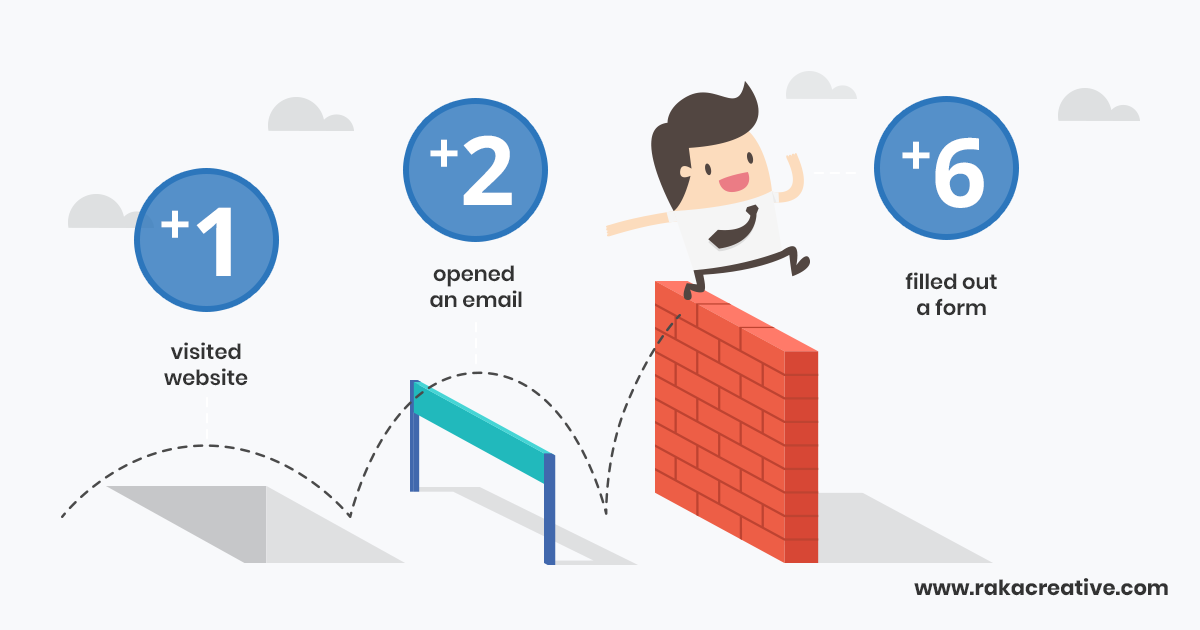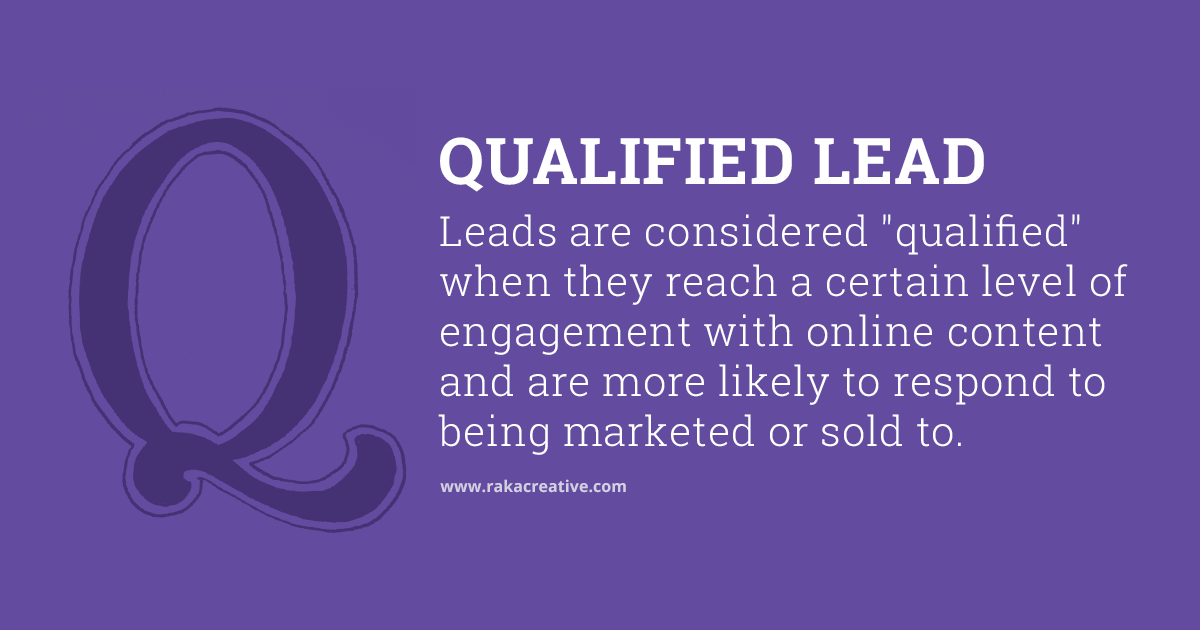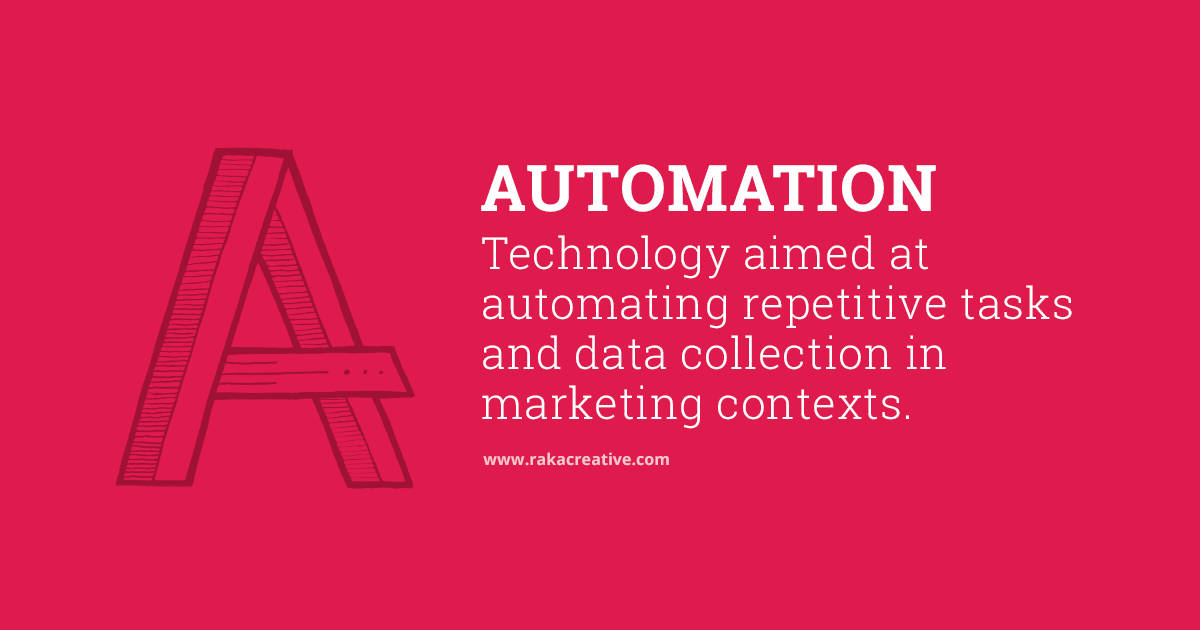I’ll admit it: I entered the world of inbound marketing with a sweet, sweet naiveté. I thought this was a world where creativity is king above all else, where rules were meant to be broken, and where I wouldn’t have to do that horrible thing which plagues all young writers’ lives!
Oh yes my fellow creatives, it’s time to call up that teacher you ignored in middle school (or Facebook them, let’s be real here) and apologize, for I’m here to tell you to incorporate math into your marketing strategy.
But not just any math, no. This particular brand of math is called lead scoring, and it’s not just for your sales team anymore.
For those of you who haven’t yet fled in terror, here are the basics we’ll cover in the rest of this post:
- What is lead scoring?
- Why is it important (to sales)?
- Why do I care (as a marketer)?
- How do I do it?
Those last three points could be their own blog series, nevermind individual posts, so please consider this a primer and keep an eye on our Digital Agency blog for more in the future.
What is lead scoring?
Here’s the definition of lead scoring according to HubSpot:
“Lead scoring is a methodology used to rank prospects against a scale that represents the perceived value each lead represents to the organization. Job position, number of social media followers, or company size may be information valuable to your business about a lead.”
Put another way: Lead scoring is a points system for your contacts. If you’re a fantasy sports fan, think about how your league is scored—with different actions accounting for different point values.
As your leads take different actions on your website, they accumulate these points so, hypothetically, their overall score increases as they move further down the sales funnel.
I like to think of lead scoring as a Super Mario-type game, where your leads are collecting points in order to power up. See? Now it sounds fun, and less math-like!
If neither of my analogies worked for you (sorry), here are a few examples of actions and point values that could be part of your lead scoring:
- If a contact visits your homepage, they get 1 point
- If a contact opens an email, they get 2 points
- If a contact downloads a content offer, they get 6 points
- If a contact subscribes to blog notifications, they get 8 points
Yay points! Wait, why are we giving them points anyways?
Why is lead scoring important (for sales)?
So the points actually aren’t for the benefit of your leads (at least not directly, stay with me on this). They won’t even know they’re getting points. The points are a tool you and your sales team can use to determine when a lead becomes an SQL, or Sales Qualified Lead.
As part of setting up your lead scoring—after you’ve assigned point values to all the actions or characteristics you want to use—you’ll set a point level for SQL. For example, if your SQL threshold is 40 points, once your lead reaches that level, they can be turned over to the sales team either automatically or manually.
Note: This is just an example, don’t get hung up on point values or thresholds just yet. We’ll get into that later.
There are two points to all of this. First, to make sales more efficient. Leads who have already engaged with your content multiple times are more likely to close, and reaching out to only qualified leads saves the sales team a lot of wasted time.
The second point is to ensure your leads are actually ready to be contacted. According to HubSpot, only 29 percent of people want to talk to a salesperson when they’re trying to learn more about product or service. They would much rather find the information themselves (oh hey, inbound marketing). Sixty-two percent would rather do a web search than talk to a real person—and my friends, I feel you.
So you see, lead scoring does benefit your leads in the long run. But what exactly is its benefit for marketers?
Why do I care (as a marketer)?
The latest State of Inbound report from HubSpot shows that when it comes to coordinating sales and marketing efforts, some of us have a long way to go. Only five percent of salespeople surveyed for the report said the leads they received from their marketing were very high quality, and only 22 percent said marketing was their best source of leads.
Conversely, 59 percent of marketers said, “Hey, we’re sending our salespeople our best quality leads!”
See, what we’ve got here is a failure to communicate….
Lead scoring is a way to quantify the quality of leads, and avoid the obvious disconnect above. On top of that, SQL isn’t the only threshold you can set in lead scoring. You can set a point level for Marketing Qualified Leads, or really whatever milestones you want to be aware of to more accurately measure the buyer’s journey. Point levels can then be used to start workflows, trigger email nurturing, and generally improve your inbound marketing strategy.
The last point I want to make is that the process of putting a lead scoring system in place can be really useful for marketers and salespeople alike, so let’s get into a little bit of how to do that.
How do I do it?
In order to build a lead scoring model in pretty much any CRM, you need to first establish a few things:
- The types of data you’ll use to score leads
- The priority of those data types
- What your basic lead score levels should be
Start by making two lists; one with the actions or engagements with your content that you want to score, and another with contact characteristics you think are important (like company size or location).
After you have a comprehensive list, it’s time to prioritize those actions and characteristics so you have an idea of where they should eventually fall on the points scale. You should utilize analytics data (conversion rates specifically), input from sales team members, and what you know about your current customers to establish those priorities.
Here’s where the math comes in.
Use what you know about your conversion rates to set the gaps between your point values. For example, if your overall lead-to-customer rate is 1%, but you know that leads who downloaded a case study from your website or subscribed to blog notifications convert at about 5%, the point level for those actions should be about 5x that of just being a lead.
Example time:
Say you set a website or blog pageview at 1 point. If leads who have read one or two blog posts or website pages convert at about a 2% rate, but leads who have downloaded a content offer convert at a 10% rate, you’ll want to set downloading content offers at 5 points in your lead scoring.
After you’ve set individual point values, set your MQL and SQL levels, again working off of sales team input and what you know about customers who have already converted. John Burger became a customer after reading four blog posts, subscribing to email notifications, downloading a content offer, and then being contacted by a sales representative. Add up the values of all the actions he took and there’s one possible SQL level.
Now do it again.
Obviously you don’t have time to do this for every contact in your database, so in the end your levels will be an educated guess. If you don’t have a lot of data to work with, you may be setting individual point values based on educated guesses and sales team anecdotes too, and that’s OK. Lead scoring, like everything else we do, should be tested and updated often, so if your first model doesn’t work out, don’t worry too much. Just learn from it and adjust.
The journey is the destination
If you think the above sounds right up there with getting a root canal, I don’t blame you. Lead scoring is not something you can put together in a few spare minutes. It’s an involved process, but going through it can help you determine the overall value of your marketing efforts and better connect with your sales efforts.
So yes, math is important for marketing. Sorry. Lucky for us, there are a lot of tools out there that do most of the actual calculating for us. Click below for one of my personal favorites.





